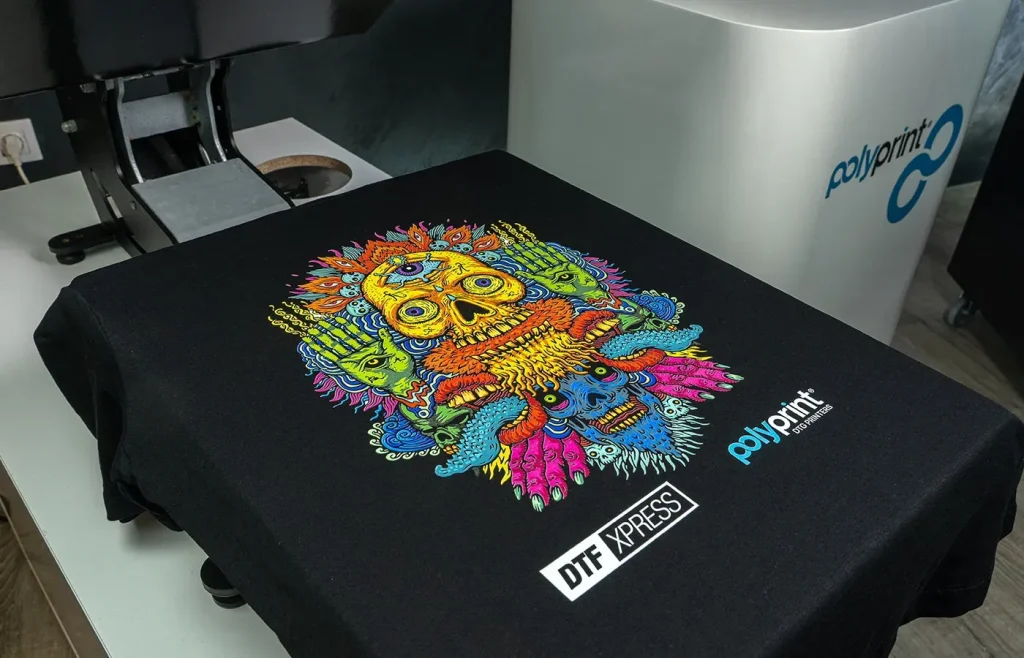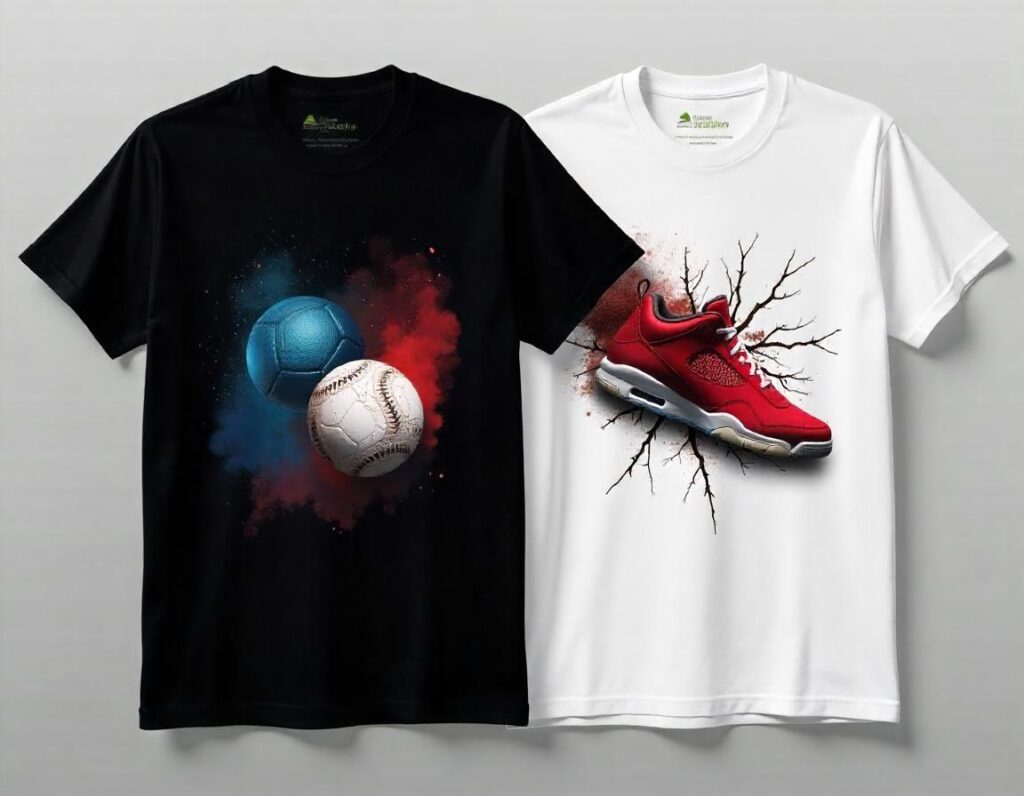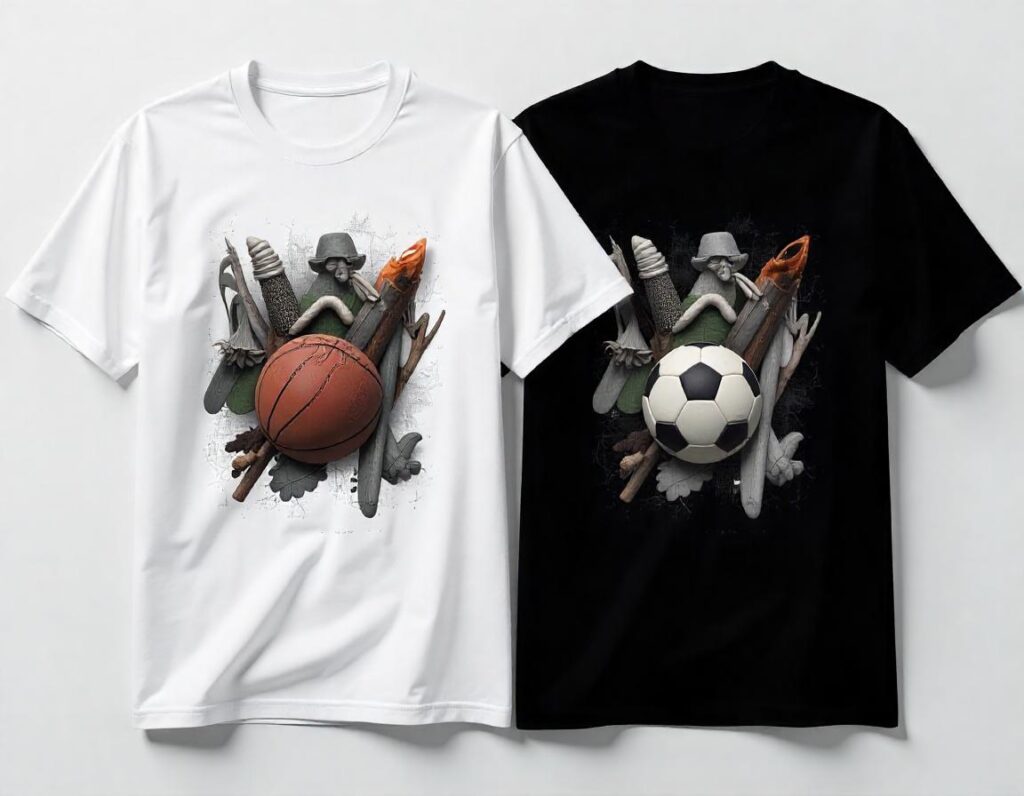DTF printing, or Direct to Film printing, has emerged as a game changer in the custom printing landscape, enabling artists and businesses alike to produce stunning, vibrant designs with ease. This innovative technique allows for the precise transfer of artwork onto a variety of fabrics, unlocking creative potential across multiple applications. In this comprehensive guide, you will learn how to DTF print effectively, exploring the DTF transfer process to achieve professional-quality results. We’ll also delve into the best fabrics for DTF printing and provide essential DTF printing tips to elevate your projects. Join us as we navigate through the exciting world of DTF printing, where endless possibilities await!
Known for its versatility, Direct to Film printing (DTF) has revolutionized the way designs are transferred onto fabrics, making it easier than ever to bring vivid artwork to life. This technique allows for printing on an array of materials, delivering exceptional quality and detail in every transfer. Whether you’re seeking a DTF gangsheet tutorial or looking for insights on the most suitable fabrics for this printing method, understanding the DTF process will enhance your creative capabilities. The simplicity and effectiveness of DTF printing make it ideal for custom apparel, promotional items, and more. Let’s explore the nuances of this technique and uncover tips that will help you maximize your printing success!
What is DTF Printing and How Does It Work?
DTF printing, short for Direct to Film printing, is a cutting-edge technology that allows for high-quality, vibrant designs to be transferred onto various fabrics. This innovative process begins with printing your artwork onto a specialized film, which is then cured and transferred to the fabric through heat. The key advantage of DTF printing lies in its ability to produce intricate designs with detailing that competes with traditional methods, while also being compatible with a wide range of materials including cotton, polyester, and blends. As such, understanding the workflow of DTF printing is essential for achieving stunning results.
The DTF transfer process is vital for anyone looking to explore this printing technique. It includes several steps: designing your artwork, printing it onto DTF film, applying adhesive powder, curing the film, and finally heat transferring it onto your chosen fabric. Every step carries its own significance, and mastering them ensures that your designs come out vibrant and durable. Additionally, DTF printing can be used for diverse applications from custom apparel to promotional items, making it a versatile choice for those in the printing industry.
Step-by-Step Guide to DTF Printing
To begin your DTF printing journey, start with the first crucial step of design preparation. Utilize graphic design software to create artwork that is aligned with the DTF printing specifications, primarily focusing on CMYK color format and transparent backgrounds. A well-prepared design ensures your final output will be true to your vision. Next, you’ll want to print your design onto the DTF film using a specially modified printer. The choice of printer and ink quality is critical here, as they directly affect the vibrancy and accuracy of your prints.
Once you have your film printed, the next steps are applying adhesive powder and curing your design. The adhesive powder is essential as it creates a strong bond between the print and the fabric. After evenly distributing the powder, the film must be cured, either through a heat press or a curing oven. This step solidifies the bond and prepares the design for the heat transfer process. Utilizing proper temperatures and timings for curing is essential to prevent damage and achieve the best possible results.
Best Fabrics for DTF Printing
Choosing the right fabrics can significantly impact the outcome of your DTF printing projects. Ideal materials for DTF printing include 100% cotton and polyester blends, which have been shown to accept the ink better and enhance the overall vibrancy of the prints. Cotton, with its natural fibers, offers a soft texture and breathability, making it perfect for t-shirts and casual wear. On the other hand, polyester blends are robust and resistant to shrinking, making them a practical choice for activewear and promotional items.
While cotton and polyester are the most commonly used fabrics for DTF printing, other options such as canvas and denim can also yield excellent results. It is essential to run a test on different fabric types to see how well they accept the ink during the DTF transfer process. Each material reacts differently to heat and pressure, which can affect the final quality of the print. By experimenting with various fabrics, you will discover which combinations work best for your DTF printing needs.
DTF Printing Tips for Stunning Results
Achieving remarkable prints with DTF printing goes beyond simply following the steps; it requires attention to detail and a few useful tips. One of the most critical aspects is ensuring you maintain your DTF printer and heat press regularly. Cleaning the printer heads and adjusting the settings can help prevent issues like smudging and ink saturation problems, which could compromise the quality of your prints. Moreover, choosing high-quality DTF film and inks can also drastically enhance the vibrancy and longevity of your designs.
Additionally, don’t shy away from experimenting with different design elements! DTF printing is incredibly versatile, allowing you to play with various colors, gradients, and textures. This experimental approach will enable you to push the boundaries of your creative vision while also finding what works best in the transfer process. Remember, practice makes perfect, so exploring different techniques and styles can lead to better results in your future DTF printing projects.
The Importance of Final Curing in DTF Printing
Final curing is a crucial step in the DTF printing process that ensures longevity and durability of the prints. After the initial heat transfer, performing a final heat press on the fabric helps lock in the design, making it more resistant to wear and tear, especially for items that will experience frequent washing. Following manufacturer guidelines regarding temperature and duration for this process is essential, as improper curing can lead to fading or premature peeling of the design.
Incorporating a final curing step not only secures your prints but also enhances the overall finish of the garment. This practice is highly recommended for all types of apparel, especially for those meant for retail, where quality expectations are high. By emphasizing the significance of final curing in your DTF printing projects, you ensure that the designs not only look good upon application but also maintain their vibrancy and crispness over time.
Frequently Asked Questions
What is the DTF transfer process?
The DTF transfer process involves several steps, including designing artwork using graphic software, printing on DTF film with special inks, applying hot-melt adhesive powder, curing the design, and finally transferring it onto fabric using a heat press. This method creates vibrant and durable prints suitable for various fabrics.
How to DTF print effectively?
To effectively DTF print, follow these tips: ensure your artwork is in CMYK format, use high-quality DTF film and ink, optimize printer settings for quality prints, and accurately adhere the hot-melt adhesive powder. Proper curing and application of heat during the transfer are key to achieving stunning results.
What are the best fabrics for DTF printing?
The best fabrics for DTF printing include 100% cotton and polyester blends, as they absorb the ink well and enhance color vibrancy. Fabrics should be smooth and free of textures to ensure the best results during the transfer process.
What is a DTF gangsheet tutorial?
A DTF gangsheet tutorial is a guide that teaches you how to utilize a gangsheet for DTF printing, allowing multiple designs to be printed on a single sheet of film. This method increases efficiency and reduces material waste while producing multiple prints at once.
What are some essential DTF printing tips?
Some essential DTF printing tips include maintaining your DTF printer regularly, experimenting with different design styles, ensuring proper powder application without clumping, and performing a final heat press on your transfer to enhance durability.
Can I use DTF printing on all types of fabrics?
DTF printing works best on fabrics like cotton and polyester blends. However, it’s less effective on fabrics with heavy textures or waterproof coatings. Always test on a sample fabric to ensure compatibility before proceeding with your final design.
| Step | Process | Key Points |
|---|---|---|
| 1. Design Preparation | Create your artwork using graphic design software. | Use CMYK format with a transparent background. |
| 2. Printing the Film | Print onto specialized DTF film with a DTF printer. | Optimize printer settings for best results. |
| 3. Applying Adhesive Powder | Add hot-melt adhesive powder to wet ink. | Sprinkle evenly and shake off excess powder. |
| 4. Curing the Design | Cure the printed film using heat. | Follow guidelines to avoid damage. |
| 5. Heat Transfer | Use a heat press to transfer design to fabric. | Apply correct temperature and pressure. |
| 6. Peeling the Film | Carefully peel away the film after cooling. | Check for clean transfer of the design. |
| 7. Final Curing | Perform final heat press for durability. | Secures the design for frequent washes. |
Summary
DTF printing, or Direct to Film printing, offers a transformative method for producing detailed and vibrant designs that can be transferred to various fabrics. This technique not only utilizes advanced printing technology but also ensures high quality and durability, making it an excellent choice for custom garment decoration. As you embark on your DTF printing journey, experimenting with materials and designs will not only enhance your creativity but also improve your skills. Follow the outlined steps carefully to achieve stunning prints that will impress your client base. Enjoy the endless possibilities with DTF printing!



